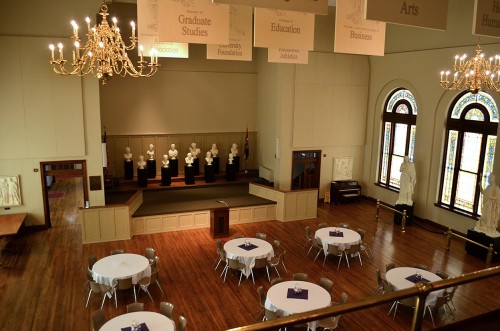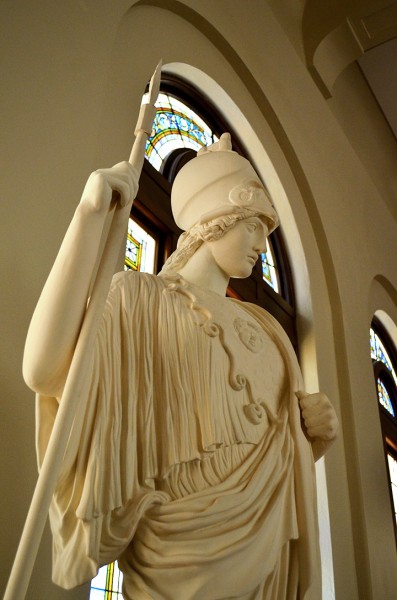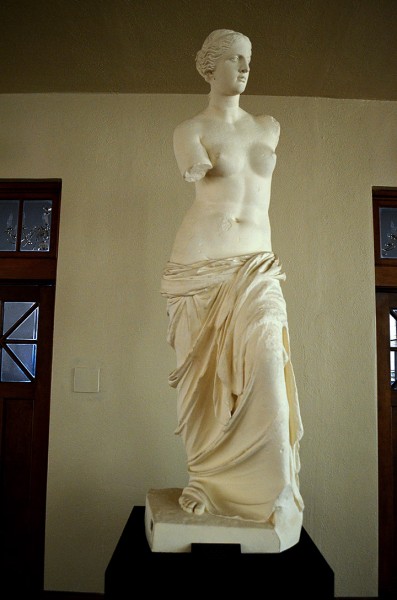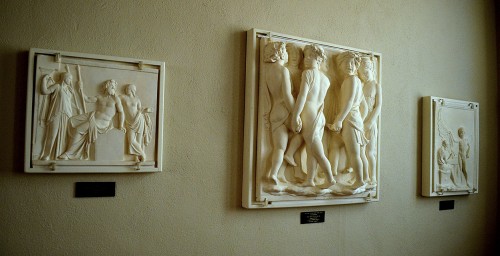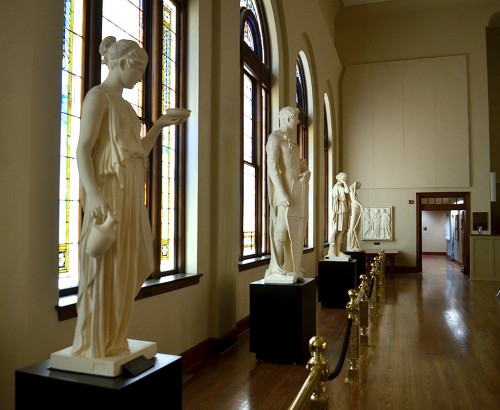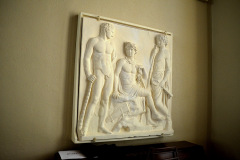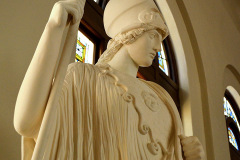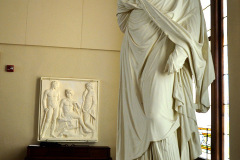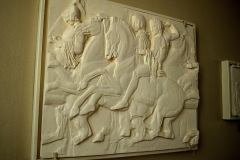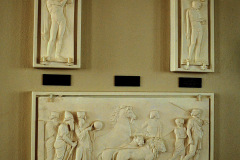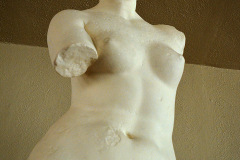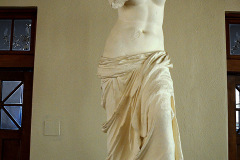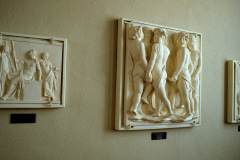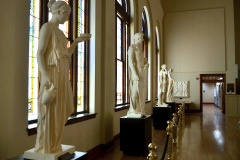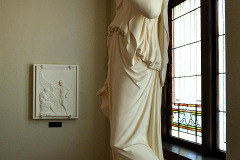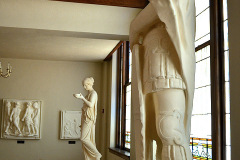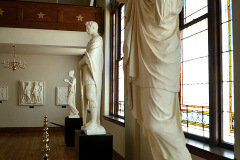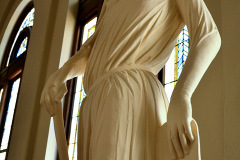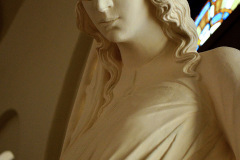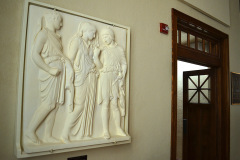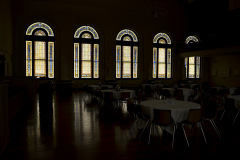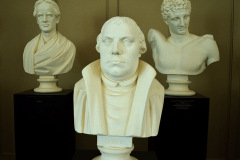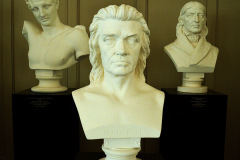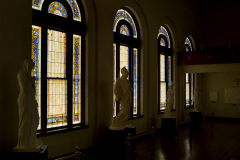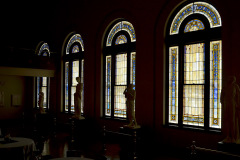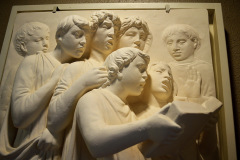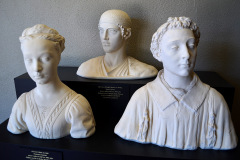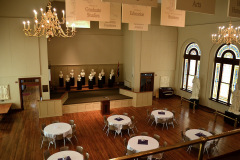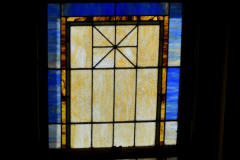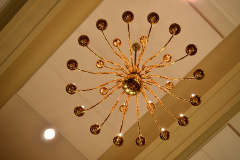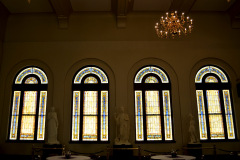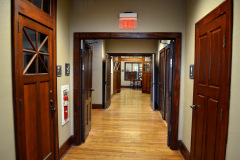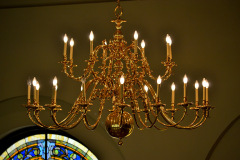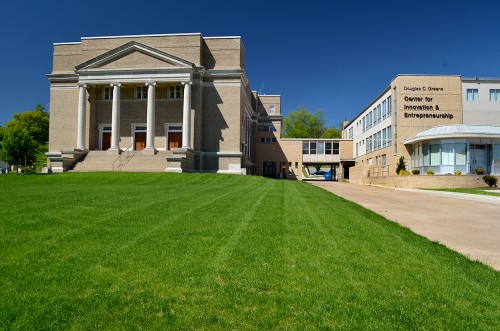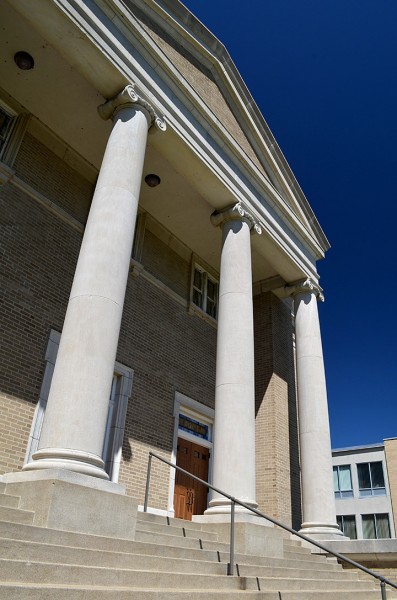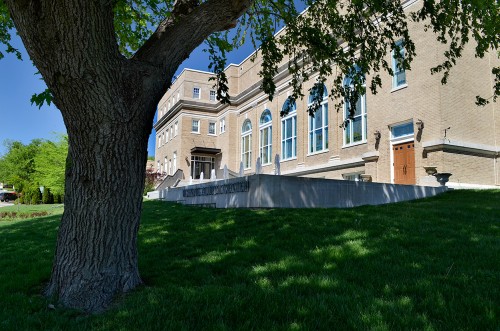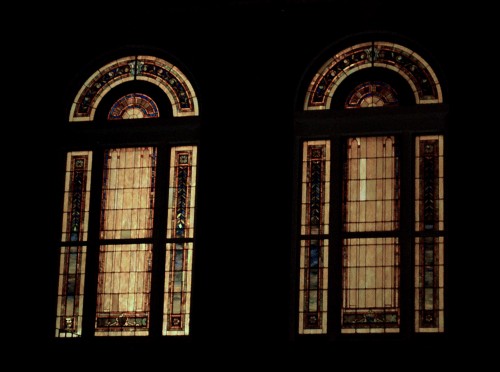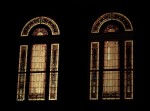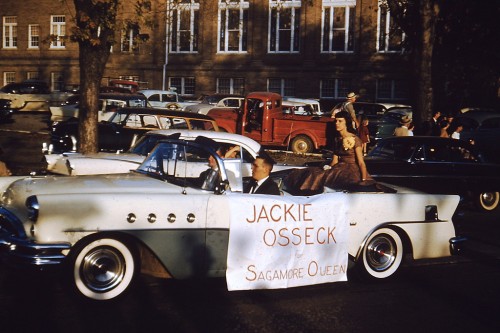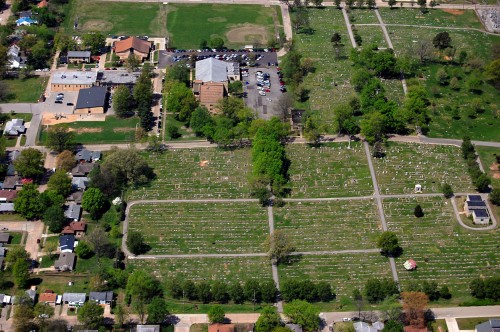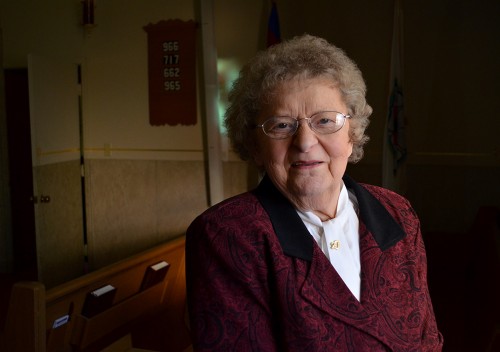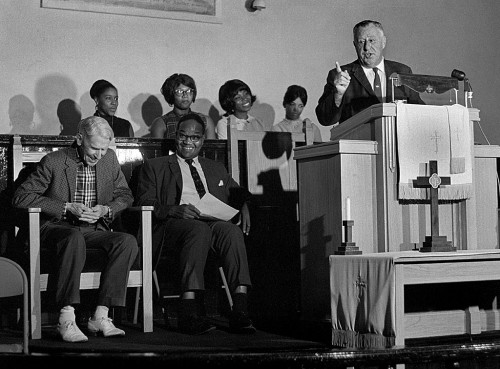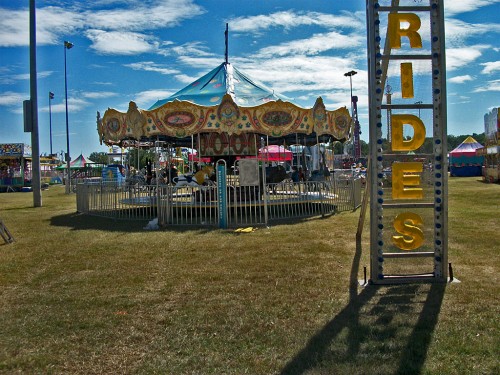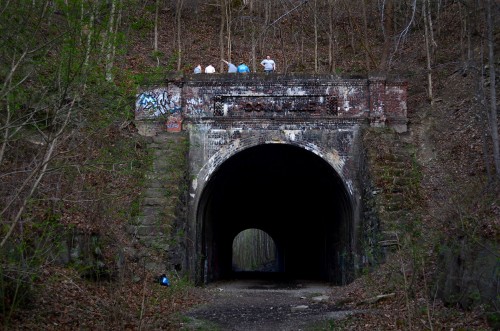 I did two posts back in April where I promised I was going to write about the allegedly haunted Moonville railroad tunnel. (The first showed a spectacular orange sunset, and the other was where I tried, very unsuccessfully, to get Curator Jessica to play Padiddle by Urban Dictionary rules.)
I did two posts back in April where I promised I was going to write about the allegedly haunted Moonville railroad tunnel. (The first showed a spectacular orange sunset, and the other was where I tried, very unsuccessfully, to get Curator Jessica to play Padiddle by Urban Dictionary rules.)
Author and playwright Anton Chekhov famously wrote, “If you say in the first chapter that there is a rifle hanging on the wall, in the second or third chapter it absolutely must go off. If it’s not going to be fired, it shouldn’t be hanging there.” So, to keep from violating Chekhov’s Rule, here’s an account of our visit.
Located in least populated county in Ohio
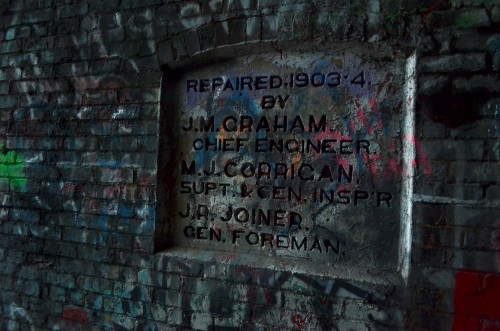 The Marietta and Cincinnati Railroad was trying to find the most economical route to reach Cincinnati when a landowner named Samuel Coe offered a piece of his land for free if the road would go across his property to haul coal and clay off it. A deal was struck, and coal mines and iron furnaces dotted the area.
The Marietta and Cincinnati Railroad was trying to find the most economical route to reach Cincinnati when a landowner named Samuel Coe offered a piece of his land for free if the road would go across his property to haul coal and clay off it. A deal was struck, and coal mines and iron furnaces dotted the area.
Even today, Vinton county is the least populated and most heavily forested county in Ohio. Back then, it was even more desolate. People who lived in Moonville had to walk two long trestles and go through the tunnel to get to the neighboring communities of Hope or Mineral. It was said that by 1920, five or six people had been killed walking the bridges or in the tunnel. The last fatality was in 1986 when a 10-year-old girl was struck by a locomotive on the trestle immediately in front of the tunnel.
Railroad workers said the line was the most desolate eight miles of track between Parkersburg, WV, and St. Louis.
Wanted me to squeal like a little girl
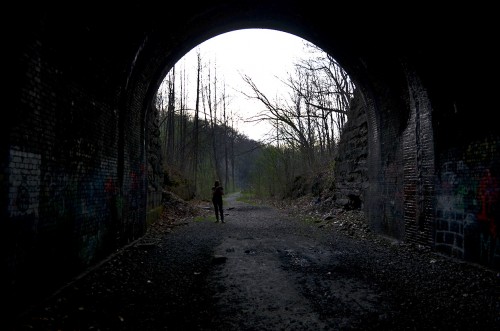 Curator Jessica has a kind of mean streak. I was sure she pumped me up with ghost stories, then lured me out to the tunnel just as the sun was going down so she could sneak up behind me and cause me to squeal like a little girl. To keep that from happening, I made sure to know her whereabouts at all times.
Curator Jessica has a kind of mean streak. I was sure she pumped me up with ghost stories, then lured me out to the tunnel just as the sun was going down so she could sneak up behind me and cause me to squeal like a little girl. To keep that from happening, I made sure to know her whereabouts at all times.
Click on the photos to make them larger. Maybe you can see a spirit I missed.
Two trains met head-on
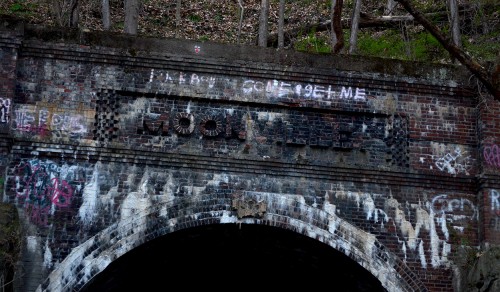 With that kind of death toll, there are lots of candidates for the mysterious figure who shows up from time to time.
With that kind of death toll, there are lots of candidates for the mysterious figure who shows up from time to time.
In 1880, according to one website, “On a cold November night in 1880, Engineer Frank Lawhead was taking the dark passage from Cincinnati to Marietta. He would have no more time than to blink at a light bearing down on him before his life was stripped away from him. The dispatcher failed to notify the train there was a second train coming toward them on the tracks. The train he was driving along the Marietta and Cincinnati route through the tiny town of Moonville would take a headlong trip straight into another train coming along the same tracks. He died, most likely, instantly along with the fire man on board the train.”
The February 17, 1895, Chillicothe Gazette reported, “A ghost (after an absence of one year) returned and appeared in front of a freight at the point where Engineer Lawhead lost his life. The ghost is seen in a white robe and carrying a lantern. ‘The eyes glistened like balls of fire and surrounding it was a halo of twinkling stars.'”
Other theories
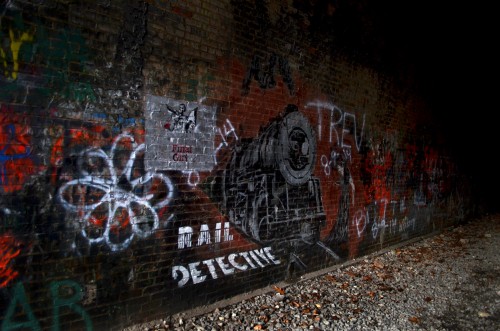 Another website lists a whole raft of possibilities: “The ghost of the Moonville Tunnel is one of those legends that’s based on historical fact but has been distorted by telling and retelling over the years. The major story is that someone–an engineer, a conductor, a brakeman, a signalman?–was crushed under the wheels of the train that used to go through the place. Apart from that basic fact, things get hazy. Was he drunk? Was he stationed in Moonville or was he a brakeman on the train? Was he an eight-foot-tall black guy named Rastus Dexter? Some sources say he was playing cards with other guys. It’s been said that he was a conductor murdered by a vengeful engineer who asked him to inspect underneath the train and then started it up. One source even said that he was trying to get the train to stop because Moonville was in the grip of a plague and was running low on supplies. His death was the end of Moonville.
Another website lists a whole raft of possibilities: “The ghost of the Moonville Tunnel is one of those legends that’s based on historical fact but has been distorted by telling and retelling over the years. The major story is that someone–an engineer, a conductor, a brakeman, a signalman?–was crushed under the wheels of the train that used to go through the place. Apart from that basic fact, things get hazy. Was he drunk? Was he stationed in Moonville or was he a brakeman on the train? Was he an eight-foot-tall black guy named Rastus Dexter? Some sources say he was playing cards with other guys. It’s been said that he was a conductor murdered by a vengeful engineer who asked him to inspect underneath the train and then started it up. One source even said that he was trying to get the train to stop because Moonville was in the grip of a plague and was running low on supplies. His death was the end of Moonville.
This seems a little too romantic, especially since the actual newspaper article from the McArthur Democrat on March 31, 1859 tells a much more mundane story: ‘A brakeman on the Marietta & Cincinnati Railroad fell from the cars near Cincinnati Furnace, on last Tuesday March 29, 1859 and was fatally injured, when the wheels passing over and grinding to a shapeless mass the greater part of one of his legs. He was taken on the train to Hamden and Doctors Wolf and Rannells sent for to perform amputation, but the prostration of the vital energies was too great to attempt it. The man is probably dead ere this. The accident resulted from a too free use of liquor.’”
A squeal-free zone
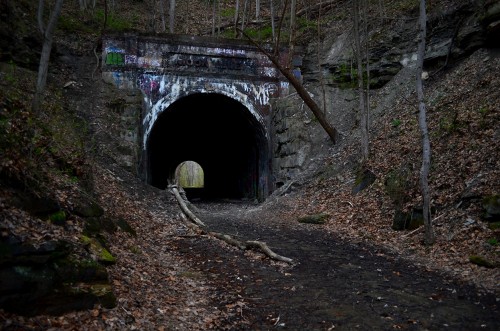 I will sometimes pick up strange vibes from places I go into, but the spirits were quiet that day in the Moonville Tunnel. Much to Miz Jessica’s disappointment, it was a squeal-free zone.
I will sometimes pick up strange vibes from places I go into, but the spirits were quiet that day in the Moonville Tunnel. Much to Miz Jessica’s disappointment, it was a squeal-free zone.
The tunnel is not the easiest thing to find, even with some detailed directions from a helpful waitress where we stopped for a late lunch. Don’t count on getting a cell signal out to help you, either. You are in a place with spotty service, at best. Here’s a site with a map and GPS coordinates.
I’d rather go down to listen to the ghost whistles from Louis Houck’s railroad that Reader Keith Robinson described.

